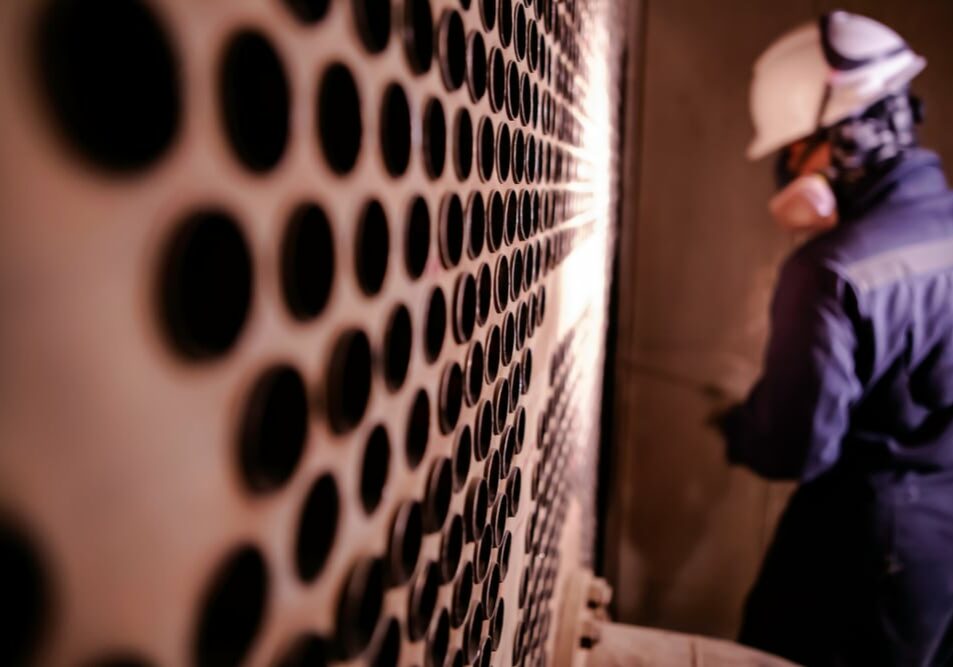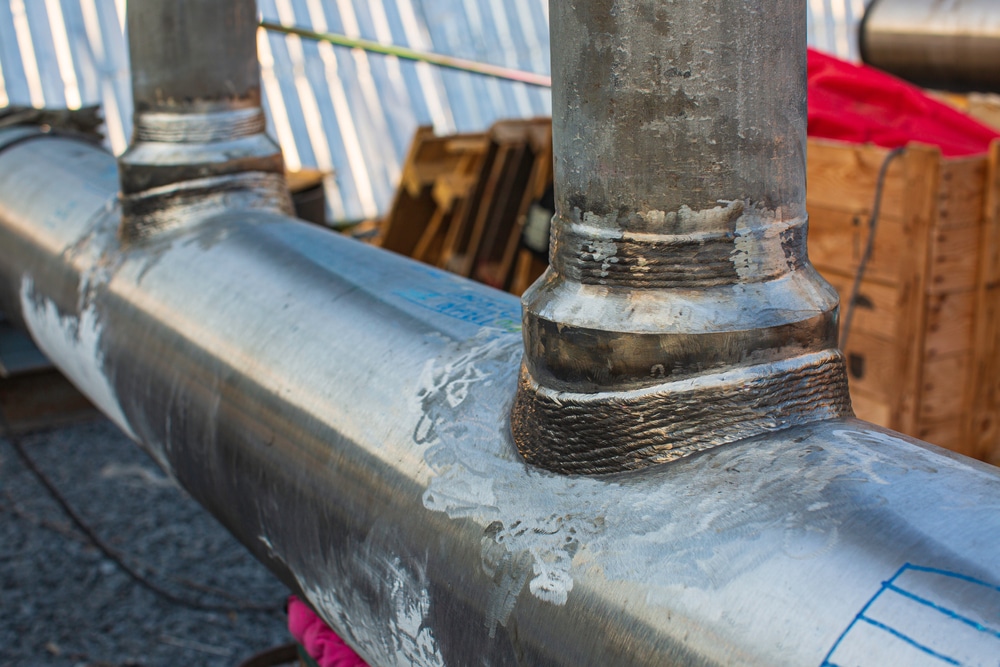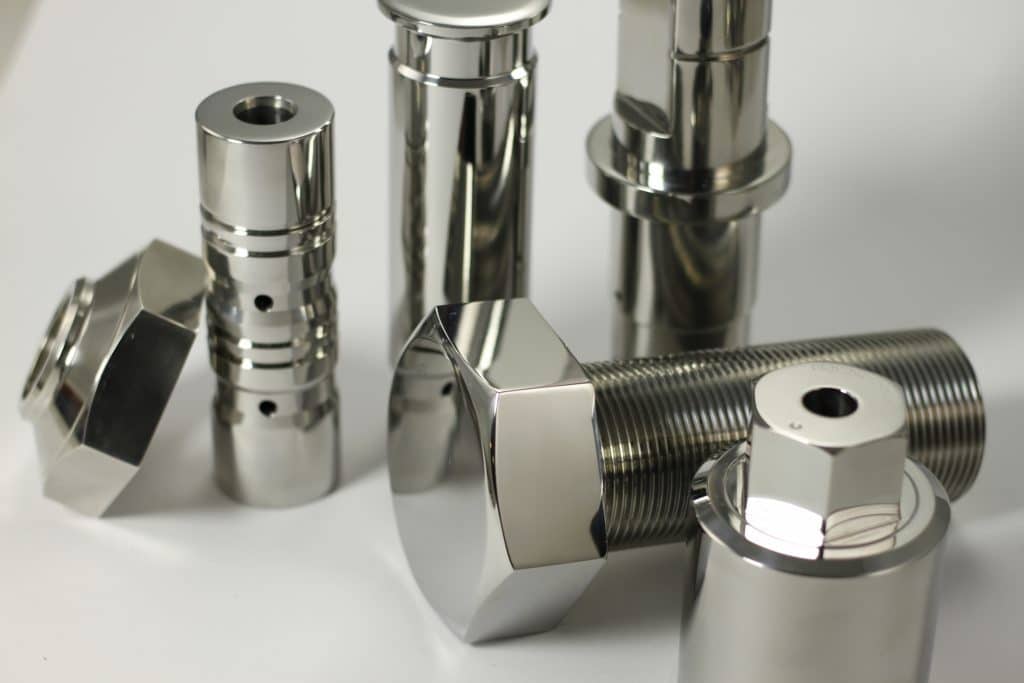What is an IGC Test?
Intergranular corrosion (IGC) is a type of corrosion that occurs along the grain boundaries of various metals and alloys. Aggressive saline or acidic environments can damage these regions, common in nuclear reactors, boilers, and heat exchangers.
Intergranular corrosion can reduce ductility and mechanical strength, increasing the risk of failure. Techniques to minimise corrosion risk are available, but testing is essential.
Think you might be susceptible to intergranular corrosion? This article explains the value of performing an IGC test for SS. We describe various testing types, factors that affect testing, and how to interpret results.

Types of Intergranular Corrosion Test Procedure
Engineers and research scientists have developed various types of intergranular corrosion test procedures to determine the degree of material damage. Firms can use this information to decide whether IGC remains within acceptable limits.
Huey Test
The Huey test involves taking a specimen of material and placing it in a boiling solution of 65% nitric acid for five periods of 48 hours each. During the end of each test period, engineers remove the specimen from the solution and weigh it. The degree of weight loss is indicative of the degree of IGC.
Strauss Test Corrosion
The Strauss test involves immersing the specimen in boiling copper sulphate and sulfuric acid for up to 72 hours. Engineers then visually examine the material, bending it to check ductility. IGC samples usually display cracks and fissures during manual manipulation.
Streicher Test
The Streicher test involves immersing the specimen in boiling ferric sulphate-sulfuric acid solution for 24 to 120 hours and measuring mass loss.
Researchers and engineers may use other IGC testing methods involving different acidic solutions and inspection methods.
Popular options include: -
- Copper sulphate test – engineers boil specimens for 120 hours (typically used for low carbon steels)
- Oxalic acid test – a test designed to ensure that no corrosion exists in the sample (only useful for specific material grades)
Additional intergranular corrosion tests may be suitable when simulating material responses in diverse service environments.

Factors Affecting Your IGC Test Report
Various factors combine to generate each intergranular corrosion test. These include:
Test Duration and Conditions
The greater the IGC testing duration, the more severe the corrosion will be. Unwanted reactions have longer to take place, leading to more extensive IGC damage.
Engineers can also tweak test conditions to make the environment more or less hospitable to the sample. Increases in mechanical stress, oxygen and flow rate can impact the severity of the test.
Ideally, engineers should perform tests that enable them to make like-for-like comparisons between materials. Changing several variables at once makes results harder to interpret.
Test Solution Concentration and Temperature
The test solution, concentration, and temperature can also affect the corrosive environment. Higher concentrations and temperatures can increase the test’s corrosive potential.
Alloy Composition and Surface Preparation
Lastly, nickel alloy composition and surface preparation can impact the corrosiveness of the test. Some metals are more reactive to acids than others, and proper surface preparation, such as adding a film to the metal, can improve resistance. Surface coating for corrosion can increase paint, zinc (through galvanisation), plastic, vitreous enamel, ceramic, and anodising with aluminium, grease, and wax.
Some alloys, such as austenitic stainless steel, have a fully corrosion-resistant state. Others perform well in some tests but not in others.
"Engineers may investigate any increase in the material’s stress corrosion cracking (SCC) coefficient. These intergranular attacks creates paths through which cracks may spread within the material under mechanical stress. "
Lonestar Fasteners, Europe
Interpretation of Intergranular Corrosion Test Results
After conducting an intergranular corrosion test, engineers must evaluate the materials to determine the degree of IGC. They must also consider any countervailing factors that could affect their interpretation of the data.
Evaluation of the IGC Test Report
Given the diversity of testing methods, engineers should evaluate results according to the accepted criteria for the specific testing method. IGC test Standard tables and charts show levels acceptable for various operating environments. These may vary considerably across methodologies.
Factors Affecting Your IGC Test Report Results
Engineers should also be aware of the various factors that could affect test results. For instance, some elements, such as carbon and chromium, can affect the formation of protective oxide films on grain boundaries. These can make samples less susceptible to IGC testing, skewing the interpretation that might apply in real-world environments.
The orientation and size of the grain may also affect IGC penetration. Larger pieces of metal may have more grain boundary exposure, resulting in increased corrosion.
Another factor affecting results is heat treatment and processing history of the material. Thermal dynamics can impact the metal’s microstructure, causing protective elements, such as chromium, to migrate to or from the grain boundary, affecting its resistive properties.
Finally, engineers should consider the testing environment. Each method has various pros and cons. Some tests are considerably more sensitive than others or are metal-specific.
IGC Testing Requirements
Understanding which test to use requires understanding and assessing the impact of various factors, including:
- Agitation
- Solution concentrations
- Duration
- Temperature
- Material properties
How Much Does an IGC Test Cost?
The cost of an Intergranular Corrosion test can greatly differ depending on a variety of factors. These include the complexity of the material under test, the specific conditions and demands of the test, the equipment being used, and the experience of the organisation carrying out the test.
Prices for IGC tests can range anywhere from several hundred to multiple thousands of pounds. Due to the complex nature of IGC tests and the various factors at play, we recommend getting in touch with LoneStar Fasteners for an accurate and comprehensive quote.
Effects of Intergranular Corrosion on the Material
Engineers must choose suitable methods to measure IGC in the material. Many look for a reduction in mechanical strength and ductility, as this indicates the continuing usefulness of the material in high-stress applications.
Changes in parameters such as fatigue and tensile strength, impact toughness, and elongation are indicative of potential failure.
Testing may reveal decreases in corrosion resistance with the removal of various oxide films or protective layers on the grain boundary. Such attacks can make the material more susceptible to damage over time.

Conclusion
Intergranular corrosion testing is a way of assessing the susceptibility of metals to cracking and failure along their grain boundaries. Such testing is essential in critical, high-stress environments, such as shipping, aerospace and nuclear.
IGC testing is not always straightforward. Engineers need to choose a suitable method and calibrate the solution, temperature, and exposure time to test metals sensibly.
Future developments in IGC testing will involve establishing more generally accepted and universal testing criteria. Guidelines, analytical tools, and models will give engineers more confidence in the results they obtain.
LoneStar Fasteners Europe is a leading manufacturer and supplier of high-performance fasteners that adhere to relevant standards and provide our customers with the solutions they need to maintain safety and compliance. Learn more about our bolts and fasteners or contact us to make an enquiry.
Quotation / Information Request



